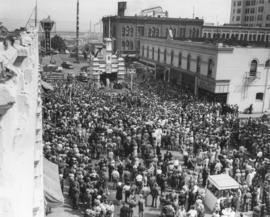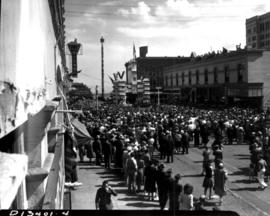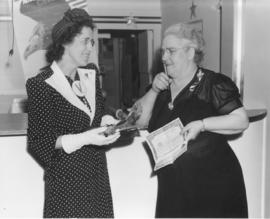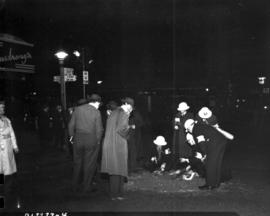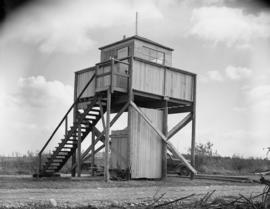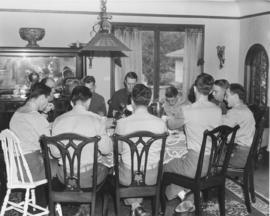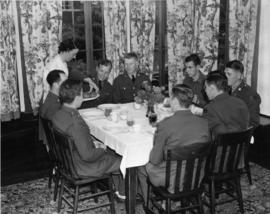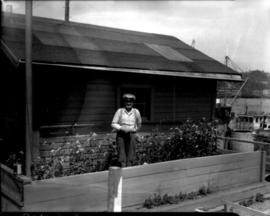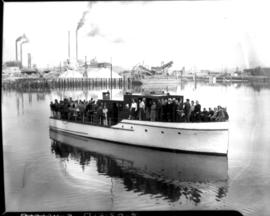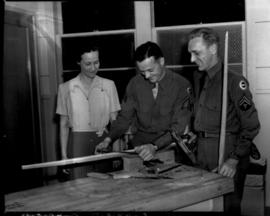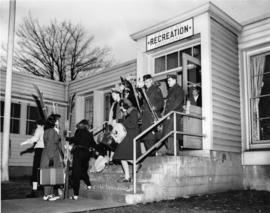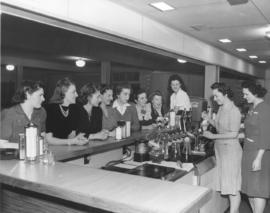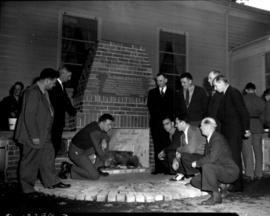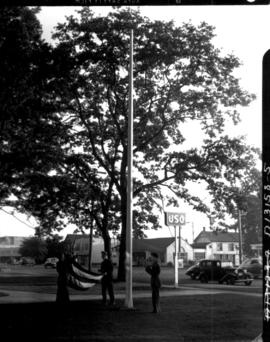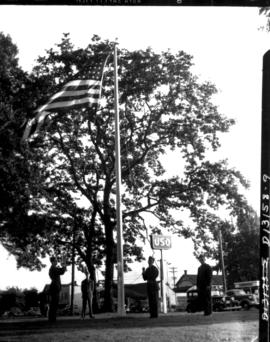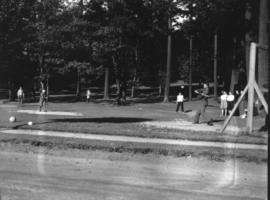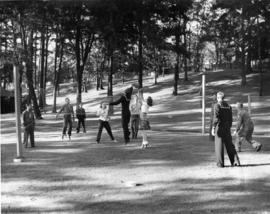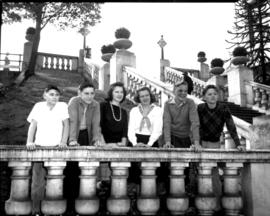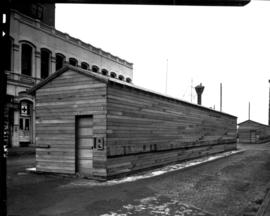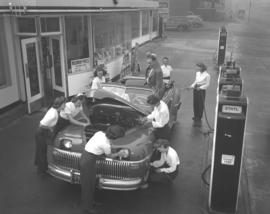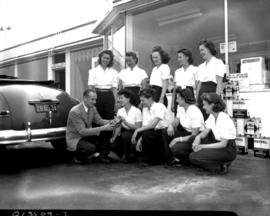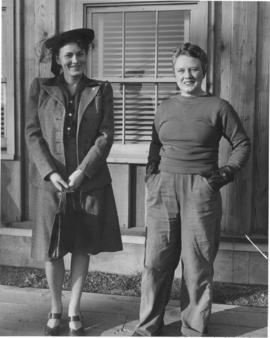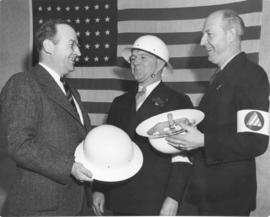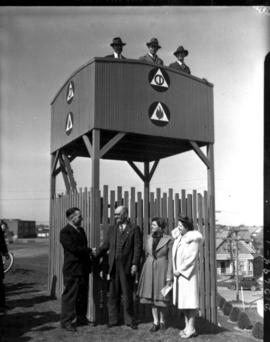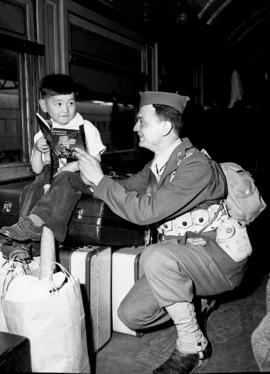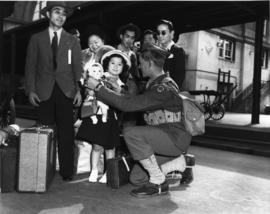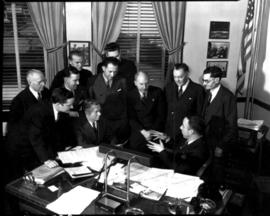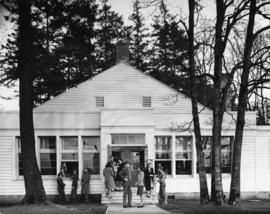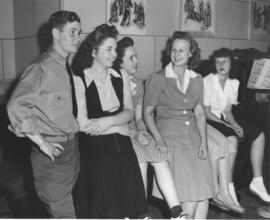Salvage for Victory meeting at Mayor's office in City Hall. Representatives of agencies interested in collecting scrap iron, rubber, waste paper and other salvageable items discuss plans for organization of a Tacoma committee with state chairman J.C. Haley and Mayor Harry Cain. Front row, left to right- Guy Thompson, Haley, Mayor Cain. Center row: Rev. H.W. Michener, J.H. Titcomb, Fred Hughes, George Russell, Elmer Nelson, J.R. Kiely. Rear: Chas. McIntyre, Ray Ecklund. The local committee would be the first to be formed in the "Salvage for Victory" program under Haley's control. The proposed committee would be made up of eight men representing local charitable agencies and three business men. Citizens with salvage materials to give to the nation's defense program would donate through one of these agencies. There was no official government agency for this purpose. Agencies represented in this picture are the Community Chest, Goodwill, St Vincent dePaul, Salvation Army, Youth Defense Committee, Volunteers of America and the Air Raid Wardens. (T. Times 3/5/1942, pg. 1, picture pg. 7; TNT 3/5/1942, pg. 8)
World War, 1939-1945--Scrap drives; Cain, Harry P., 1906-1979; Mayors--Tacoma--1940-1950;
